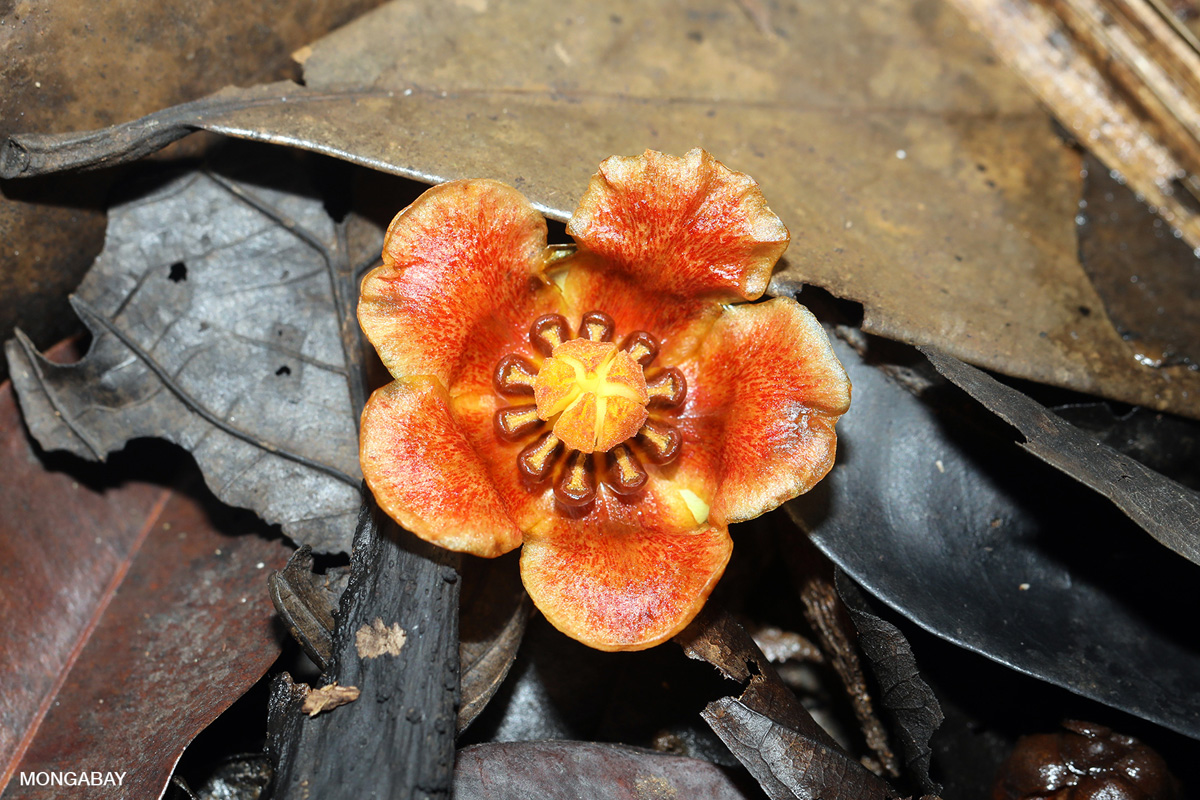- More than 5,000 plants from different stretches of Amazon Forest were analyzed by two Brazilian biologists.
- It was the first spatial division of flora based on species composition. The researchers compiled data on 301 plant communities distributed all over the Amazon.
- The work also indicates the major potential impact of climate change on Amazonian vegetation.
- Knowing the spatial distribution of flora is essential to protect the Amazon, since the subregions allow targeting conservation efforts.
A recent study published in the Journal of Ecology established a new division of Amazonian flora based on the distribution of more than 5,000 woody species (trees and shrubs). The work, which analyzed data on species composition for the first time, may contribute to future conservation efforts.
According to the authors – biologists Karla Silva-Souza and Alexandre Souza, from the Ecology Department of the Federal University of Rio Grande do Norte (UFRN) – previous mapping efforts focused on vegetation physiognomy or on data sets that included species of animals, plants and habitat characteristics.
“While the method reveals universal distribution patterns of the biota [all living beings], it may conceal important patterns for specific groups, as is the case with woody plants,” Silva-Souza explains.
In the new methodology, the researchers compiled data on the composition of species in 301 plant communities distributed all over the Amazon. Places that statistically shared fewer individual species were separated into distinct subregions while those with more species in common were grouped under the same subregion.

In total, the study identified 13 subregions in the Amazon Forest, which covers 40% of South America and includes areas in nine countries. These areas also have exclusive species, that is, that occur only in a certain subregion.
While some floristic zones are large – such as subregion 1 (in the illustration below, on the right), close to the Andes – others are small and peripheral, such as subregion 13, near the Brazilian Cerrado. Some species that characterize these two subregions are, respectively, Jacaranda macrantha (caroba) and Astrocaryum chambira (chambira palm); and Astronium fraxinifolium (kingwood) and Cochlospermum regium (yellow cotton tree).

Climate change and the future of species
Furthermore, the scientists wanted to investigate – also based on statistics – whether the characteristics of these subregions are related to human activities and environmental and historical factors. For example, vegetation stability over thousands of years.
“The importance of the human activities we observed in the distribution of subregions indicates forest clearing and fragmentation as a result of land encroachment and large-scale agriculture,” Karla Silva-Souza says.
“The numbers also suggest that the current rainfall and temperature regime influences the distribution of the subregions and indicates the profound impact that climate change could have on the spatial organization of Amazonian flora,” she adds.
Co-author Alexandre Souza explains that the increased frequency of dry years in the Amazon region should cause expansion of certain floristic subregions and contraction of others. “Some subregions may have their territorial extensions increased because they have more species that are tolerant to low rainfall. These would proliferate while other subregions with less drought-tolerant plants would lose species and territory.”
Knowledge of the spatial distribution of flora is essential to protect the Amazon, Silva-Souza says. “Very little is known about the species that exist in the region, but as we learn more about them from floristic surveys and identification efforts, more precise spatial divisions can be established.”
The Amazon Forest is home to 25% of the global biodiversity and is one of the main forces in the Earth’s climate and biogeochemical balance. Silva-Souza says that classification efforts like this can help to protect it. “Knowing the spatial distribution of flora in subregions contributes to increasing the number of protected species, since conservation efforts are targeted according to their distribution in the vast region.”

CITATION:
Silva-Souza, Karla; Souza, Alexandre (2020), Woody plant subregions of the Amazon forest, Dryad, Dataset, https://doi.org/10.5061/dryad.kh189322x
Banner image of a flower in the Peruvian Amazon by Rhett Butler.
